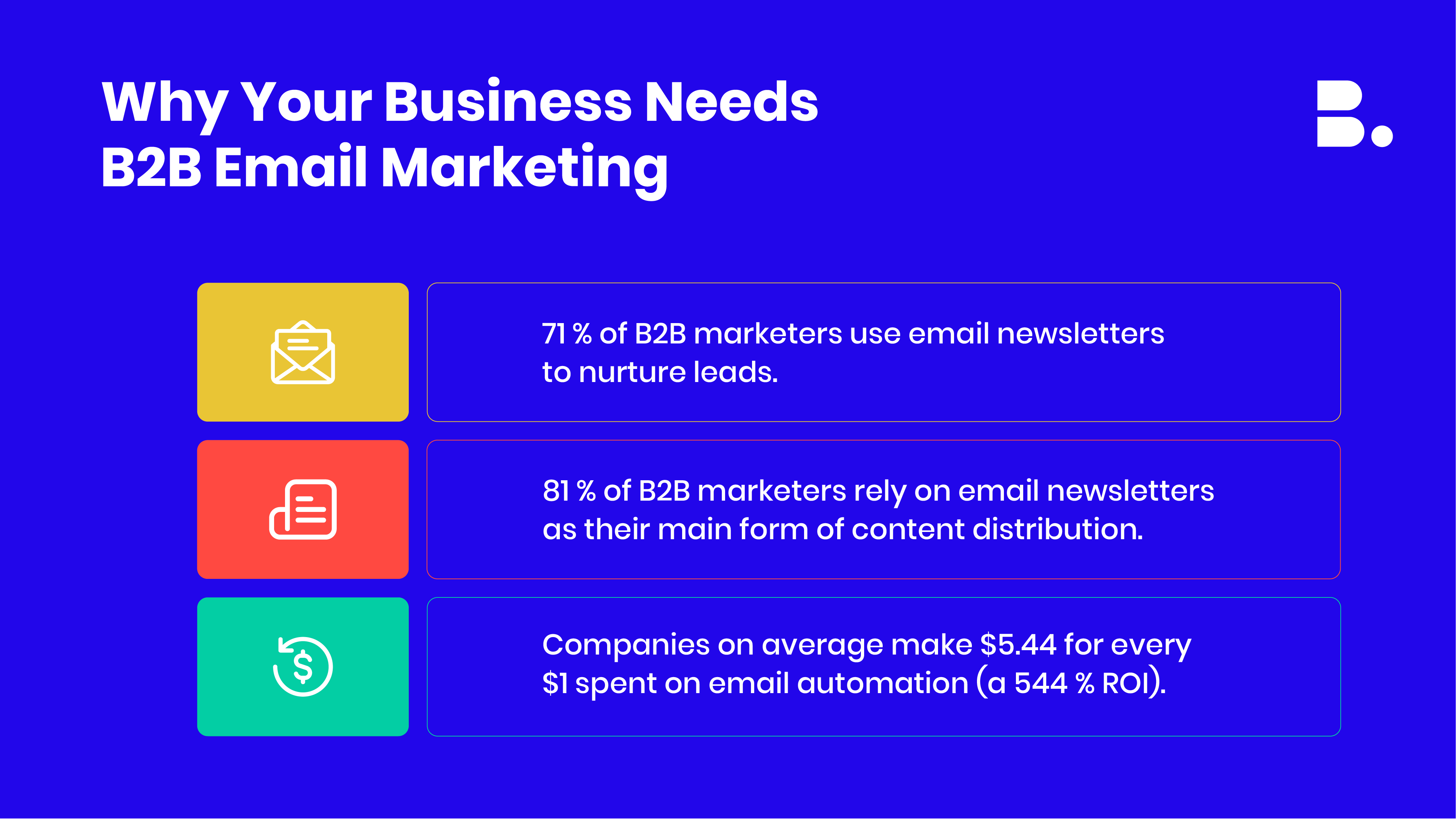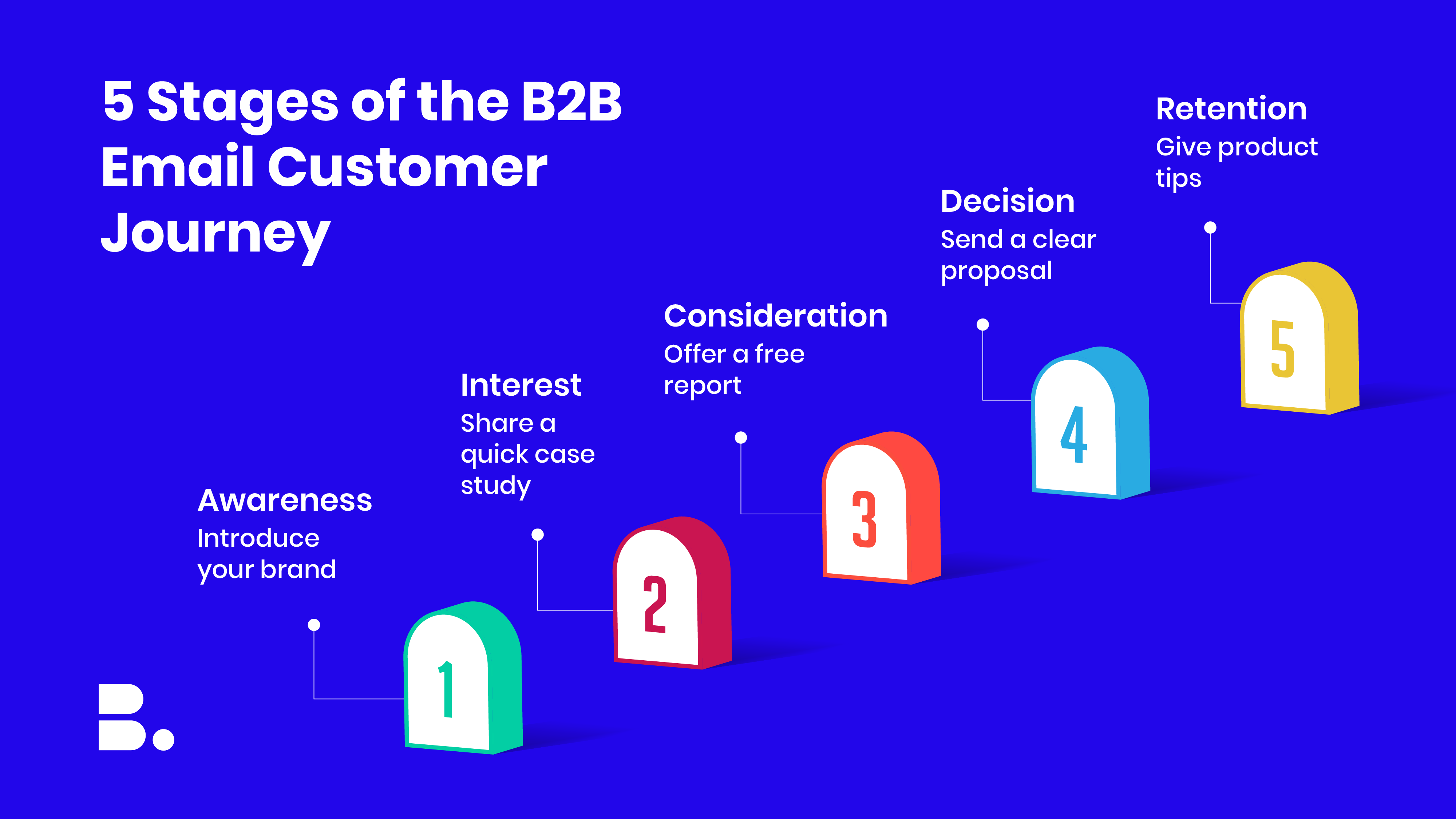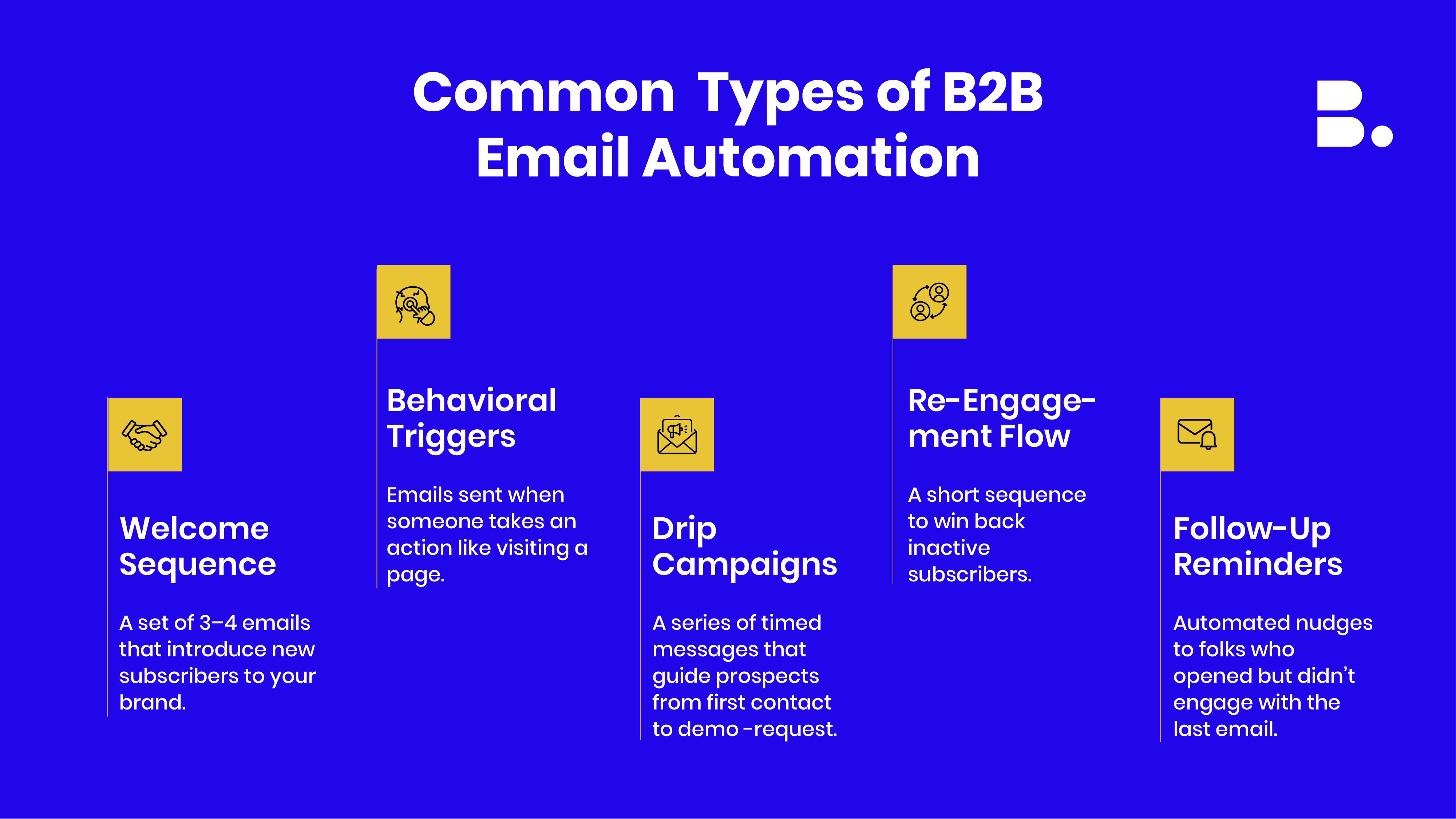Top 8 B2B Email Marketing Strategies & Best Practices for 2025
Posted on
Uncategory
Posted at
May 23, 2025
Even in 2025, B2B email marketing is one of the best channels for generating leads. Around 87% of B2B businesses rely on email for lead generation. Also, 48% of marketers say email is their most effective channel for bringing in new leads.
However, despite being one of the best and cheapest marketing channels, email marketing has its own challenges. I often hear marketers complain about messages landing in spam, low open rates, or stricter Gmail and Yahoo rules. I’ve been in their shoes too, and I very well understand the challenges of B2B email marketing.
That’s exactly why I put together this guide. In this handy guide, I will share 10 B2B email marketing strategies and best practices examples from the real business world. These techniques helped me generate quality leads and meet the goals of my B2B email campaigns. I surely know they will help you too. Let’s begin with the basics.
Understanding the Basics of B2B Email Marketing
What is B2B Email Marketing?
Business-to-business (B2B) email marketing is the process of using emails in order to target other businesses for offering services or products.
The primary goals of these B2B email campaigns are to generate leads and drive sales. It can also be used for building professional relationships.
Why Do You Need B2B Email Marketing: Top Benefits
With a proper B2B email marketing strategy in place, you can send targeted messages to decision-makers and build relationships over time. Some of the top-rated benefits of the B2B email marketing are:

Cost-Effective Lead Generation: Sending email costs a fraction of paid ads. You can reach hundreds or thousands of prospects for very little spend and still see strong returns on your investment.
Direct Line to Decision Makers: Email lands in the inbox of people who matter most. When you craft the right message, you speak directly to managers, executives, and teams who can move your offer forward.
Nurture Over a Long Sales Cycle: B2B deals often take weeks or months. Email lets you stay in touch with prospects, share helpful content, and guide them step by step without losing momentum.
Measurable Results: You can track open rates, click-throughs, replies, and conversion data. That means you know exactly which messages work and where to improve.
B2B vs B2C email marketing: How are They Different From Each Other
In B2B email marketing, you’re writing emails for multiple stakeholders. You need to address pain points for managers and top executives. However, in B2C email marketing, your focus is on individual buyers and their quick purchase decisions. Let’s know more about them..
Message Style & Content Depth are Different: B2B messages lean on data and case studies. You might link to a whitepaper or include a short testimonial. However, B2C emails use simple benefits, catchy slogans, and bold calls to action.
Your Email Design & Format Change: B2B templates stay clean and text-focused. Links to demos or reports matter more than banners or images. B2C emails use bright visuals, banners, GIFs, and large buttons to grab attention in seconds.
Email Segmentation & Personalization Also Differ: B2B email marketing best practices call for firmographic segmentation based on the company size, industry, funding stage, etc. The B2C email list is segmented by age, gender, or past purchases.
Why do these differences matter to you? Understanding the difference between B2B and B2C email marketing will help you avoid wasting your efforts on email campaigns that don’t match your audience. Overall, it will help you understand what works for B2B emails and what doesn’t.
Best Strategies for B2B Email Marketing
Some of the best strategies to make the most out of your B2B email marketing campaigns are:
1. Tie Emails to the Customer Journey
You’ll get the best results when each email matches where your prospect stands in their buying process. That means you don’t need to send the same message to someone who’s just learning about you and someone who is ready to sign.
Mapping your b2b email marketing messages to each stage keeps your audience moving forward without feeling lost. Here are some key stages of a customer journey:

Awareness: Introduce your brand or solution with a clear value statement.
Interest: Share a short case study or practical tip so they see real value.
Consideration: Offer a demo, free report, or side-by-side comparison guide.
Decision: Send a concise proposal or a limited-time offer that prompts action.
Retention: Nurture existing clients with product updates, tips, or exclusive insights.
2. Segment Your B2B Email List
Ever get an email that feels like it was sent to everyone but you? Such emails rarely resonate with people. You get better results when you send the right message to the right group.
The process of dividing your email list into smaller groups based on their shared characteristics, like demographics, behavior, or interests, is called email segmentation. You can do B2B email segmentation based on:
Industry, company size, or role: Send a product update to IT directors at mid-market firms, and a case study to CEOs at startups.
Past engagement or opened emails: Pick out readers who clicked links in your last campaign and invite them to a webinar.
Purchase history or demo requests: Follow up with an upsell email to businesses who bought your basic plan.
3. Share Personalized Email Content
In B2B email marketing, adding a personalized touch shows that you know about their business and have done good research. When you send personalized messages, users are more likely to open and engage with them. In fact, emails with personalized messages get 29% more opens and 41% more clicks.
Add Personalized Information: You can insert the lead’s company name, role, or a fact about them.
Add Name in Subject Line: You must add the recipient's name in the subject line and write a curious statement that grabs their attention and improves the pen rate.
Value-First Tip: Start with a quick idea or data point that helps them right away before asking for anything.
Behavior-Based Follow-Up: Send the next email after they click a link or download a guide to keep the conversation relevant.
End Email with CTA or Clear Next Step: End with one simple ask such as book a demo, reply with questions, or read a short report.; so they know exactly what to do next.
4. Follow Core Email Marketing Best Practices
Cover every B2B email marketing best practice that keeps your campaigns running smoothly. This includes basic necessities such as sending emails at the right time, ensuring deliverability, using interactive elements, etc.
Value-First Lead-Gen Sequences: Use a three-step flow for writing any email. Mention a problem, pitch a solution, and then offer proof that shows how you solved similar problems for others earlier.
Send on the Right Time: Test emails on Tuesdays through Thursdays between 9 and 11 am for higher open rates. Find your own right time to send the emails based on data.
Make Sure it is Delivered: Set up SPF, DKIM, and DMARC records and watch your sender score.
Avoid Spammy Words: Limit images, skip spammy words, and include a plain-text version.
Score Your Leads: Tag replies and clicks so your sales team can follow up on hot leads.
Comply with Regulations: Build clear opt-in paths, log every permission, and add an easy unsubscribe link for GDPR.
Add Interactive Elements: Add polls, quick surveys, or AMP buttons to boost engagement and click-throughs.
5. Save Time with Email Automation

One of the toughest tasks in B2B email marketing is to reach out to the right people with the right message at the right time. Email automation helps you to do so without putting in any manual effort.
That means you can send timely emails to every new lead and every inactive contact, even when you’re focused on other tasks. To do so, you can use:
Welcome Sequence: Send three onboarding emails that introduce your brand, share key resources, and guide new subscribers to take a first step.
Re-Engagement Emails: Reach out to inactive contacts with a special offer or survey to bring them back to your product.
Follow-Up Reminders: Automatically nudge prospects who downloaded a report but haven’t booked a call yet.
6. Use AI For B2B Email Marketing
You don’t have to write every line of the email yourself. You can take the help of the ai for email marketing in order to write subject lines, draft outlines, and even to pick the best send time for each contact.
Subject-Line Suggestions: Let tools surface high-open templates so you spend less time guessing.
Content Drafts: Generate bullet points or an outline, then edit for your voice.
Send-Time Optimization: Pick the ideal hour for each recipient based on past opens.
Engagement Analysis: Spot patterns in clicks and replies to fine-tune your next send.
7. Use Consistent Email Templates
You don’t have to start from scratch each time you write an email. You can choose a fixed email template and keep changing your message. It will build trust among your audience.
Header with Logo: Keep your brand front and center with a clear headline.
Body with 1–2 Columns: Organize your text and calls to action so they’re easy to follow.
Footer with Details: Add your contact info and an unsubscribe link for compliance and clarity.
8. Keep Refining and Improving with A/B Testing
Even small changes can make a large difference in B2B email marketing. You can try different ideas to see what is working for you based on your previous email campaigns. It will help you boost your open rates and clicks over time.
Test Two Subject Lines: See which wording drives more opens.
Compare Long vs. Short Copy: Find the right balance for your audience.
Swap CTA Styles: Try a button vs. a linked sentence to boost click-throughs.
Review Weekly: Use fresh data to update your templates and send smarter.
Best Examples of B2B Email Marketing
Some of the best examples of B2B email marketing you can learn form are:
InVision’s Design Digest Drives High Engagement
InVision sends a weekly “Design Digest” email packed with tips, templates, and community highlights. By using clear headlines and preview snippets that match the content, they see open rates around 76 percent and click rates near 20 percent.
Slack’s Re-Engagement Email Wins Back Users
Slack ran a simple re-engagement campaign for inactive users. They sent a brief note with a personalized subject and a single link to a new feature demo. That email hit a 45 percent open rate and brought 20 percent of lapsed users back to the app.
Advance B2B’s HubSpot Success
Advance B2B wanted to bring its sales and marketing teams onto one platform. After becoming a HubSpot Solutions Partner, they used the CRM and email tools to send targeted messages tied to buyer stages. In six months, they saw their lead count grow by 267 percent and kept 90 percent of those new clients on retainer
Top Challenges in B2B Email Marketing (With Solutions)
B2B marketers often tell me that creating the right email campaign for their audience is one of the toughest challenges they battle with. In fact, according to an eMarketer study, around 57 % of B2B marketers feel the same.

1. B2B Email List Growth & Quality Maintenance
The best contacts of a B2B email marketing list often come from forms, gated content, or events. That’s why creating a B2B email list takes much more time than a B2C email list.
Solution: You can start creating a B2B email list by focusing only on ****one high-value channel at a time. It can be webinars or gated reports, etc., depending on what works well in your industry. Focusing on only one high-value channel to build a list is a core B2B email marketing best practice.
Case Study: B2B Email List Growth with Webinar
Patrick Whatman, CEO of Mention, ran a single webinar and collected over 1,000 quality leads in just one hour of live presentation. Later, by gating the replay and follow-up materials, they kept adding more contacts to their email list.
2. Deliverability & Sender Reputation
Gmail and Yahoo have very strict rules for checking an email before dropping in someone’s inbox. They check SPF, DKIM, and DMARC to reduce email spamming.
Solution: If you’re doing cold outreach and want to stay out of spam folders, make sure to warm up a dedicated subdomain first. A slow ramp-up keeps your sender score healthy.
3. Compliance & GDPR
Selling into multiple regions means juggling different consent rules. One misstep here and there can land you in hot water (the spam folder).
Solution: Create clear opt-in steps for your B2B email marketing services. Show exactly what people agree to, log each sign-up, and add an easy unsubscribe link in every email. You can learn in detail about GDPR Email marketing regulations here.
4. Content Fatigue & Engagement
Long nurture email sequences risk losing readers over time. In fact, 74 % of subscribers feel overwhelmed by too many emails, which hurts open rates and clicks.
Solution: To solve this, you must keep each email focused on one simple topic. Use a good subject line that matches your content, write easy-to-read copy, and make sure every message is delivered at the right time and right frequency.
Your Next Steps in B2B Email Marketing Success
Email marketing remains one of the smartest ways to reach decision-makers without breaking the bank. We’ve covered how to match your messages to each stage of the buying process, keep your list clean and focused, and follow rules that keep you out of spam folders.
You now have the tools to write subject lines that get noticed, templates that save time, and tests that drive better results. By tying each email to the customer journey, and automating tasks you’ll see higher open rates, more replies, and stronger relationships with prospects and clients alike.
If you’d rather skip the trial and error, Better Marketing can help. We build and run B2B email campaigns that follow these best practices and fit your brand voice. Let us handle the details so you can focus on growing your business. Contact us today!
FAQs on B2B Email Marketing
1. How often should I send B2B email campaigns?
There’s no one-size-fits-all answer, but most B2B teams find success with 1–2 emails per week. Any more than that can lead to content fatigue, with fewer risks of losing momentum. Always let subscribers pick their frequency where possible that small choice can keep engagement high without overwhelming inboxes.
2. How can I improve my B2B email open rates?
Strong subject lines are key. Test concise questions, list formats, or “insider” tips. Personalize with the recipient’s name or company. Keep preview text clear so readers know what to expect. Following these b2b email marketing best practices can lift opens by 10–20% over generic headlines.
3. What is the best time to send B2B emails?
The best time to send B2B emails is Tuesdays through Thursdays around 9-11 am. That’s when decision-makers clear overnight messages. You can fine-tune further by checking your own open-time data in your platform and leaning into what works for your list.
4. How do I avoid getting flagged as spam?
In order to avoid getting flagged, make sure to set up SPF, DKIM, and DMARC records so Gmail and Yahoo know your emails are legit. Use a warm-up subdomain for cold outreach. Keep image-to-text ratios low, skip spammy words like “cheap” or “free,” and always include a plain-text version plus an unsubscribe link.
5. How do I measure the success of my B2B email campaigns?
Track open rates, click-through rates, reply rates, and demo requests. For lead generation, monitor how many clicks turn into meetings or trial sign-ups. Use lead scoring to flag hot prospects and feed that data back into your CRM so sales can act fast.
6. What’s the fastest way to grow a B2B email list?
Focus on one high-value channel at a time run a short webinar, offer a gated report, or host a roundtable. Promote it via LinkedIn and your blog. Capture sign-ups with a simple form, then nurture those fresh leads with your value-first lead-gen sequences to turn them into customers.





